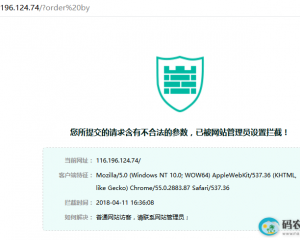情指勤一体化管控系统开发方案,情报研判分析平台搭建
回复大数据 • WX13823153201 发布了文章 • 0 人关注 • 0 个回复 • 1037 次浏览 • 2022-07-11 15:31
公安情指勤一体化指挥调度系统开发,情报研判分析平台建设
回复大数据 • WX13823153201 发布了文章 • 0 人关注 • 0 个回复 • 1000 次浏览 • 2022-07-08 15:11
- Views base64 encoded blob in HTML with PHP
- Delete Messages from a Topic in Apache Kafka
- Jackson Deserialization not calling deserialize on
- Plotting CMYK color space as 3D color solid
- Microk8s, MetalLB, ingress-nginx - How to route ex
- Angular RxJS mergeMap types
- How can I create this custom Bottom Navigation on
- Is there a limit to how many levels you can nest i
- how to define constructor for Python's new Nam
- MongoDB can not create unique sparse index (duplic
Total number of non repeated words in each tweet
可以将文章内容翻译成中文,广告屏蔽插件可能会导致该功能失效(如失效,请关闭广告屏蔽插件后再试):问题: I'mnewtojavaandTrident,Iimportedprojectforget...
3218 0 0
nginx防护编译详细教程(本教程nginx安装自宝塔面板,版本号为1.14,大部分代码可直接复制#)宝塔面板使用nginx安装云锁开启web防护后网站打不开是因为需要对nginx进行自编译,加入云锁...
2155 0 0















